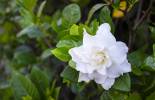Red yuccas require dividing and replating to keep small
Question: I’m replacing my red yuccas that have grown too large for a 3-foot area. They are in full sun. They spill over into the walkway where my grandchildren have been getting stabbed by the leaves. Can tree roses handle that location?
Red yucca is probably not the best choice for a space that size if you do not continue to divide them. Red yucca, like many other plants, such as iris, daylilies and ornamental grasses, will get larger in diameter each year and should be dug up and divided every three to four years to keep them smaller and attractive.
If you had dug them up, divided them and replanted a start from your divisions, you could have kept them in that sized area easily. Normally, you would divide them in the early spring, around early February, or mid-fall months around the first of October.
Tree roses require special pruning techniques and may not be the easiest rose to maintain there. Regular hybrid teas or floribundas, the more common roses, would be a better choice. If you go with roses, just make sure that the soil is covered with wood mulch.
I would dig up the red yuccas this fall, divide them and give some to neighbors for planting.
Bob Morris is a horticulture expert living in Las Vegas and professor emeritus for the University of Nevada. Visit his blog at xtremehorticulture.blogspot.com.


















